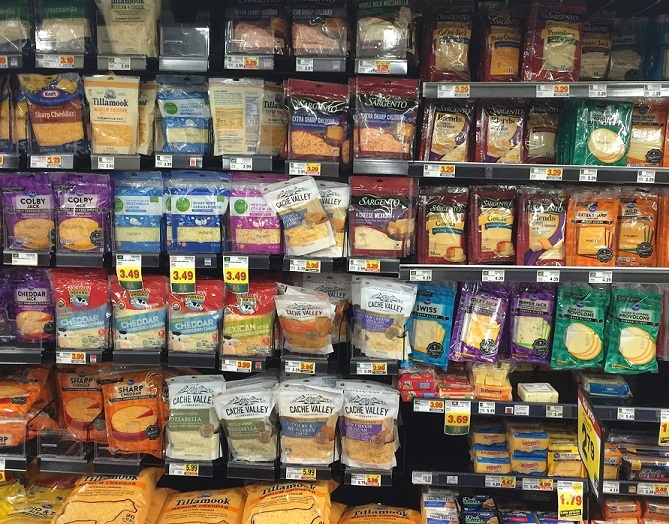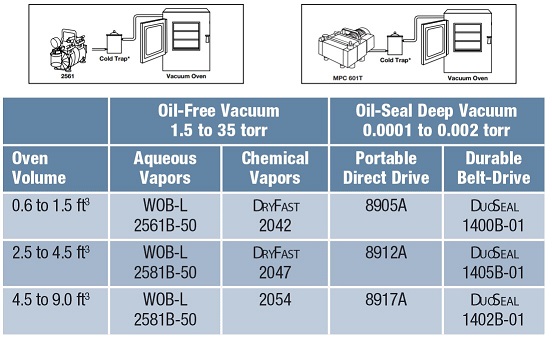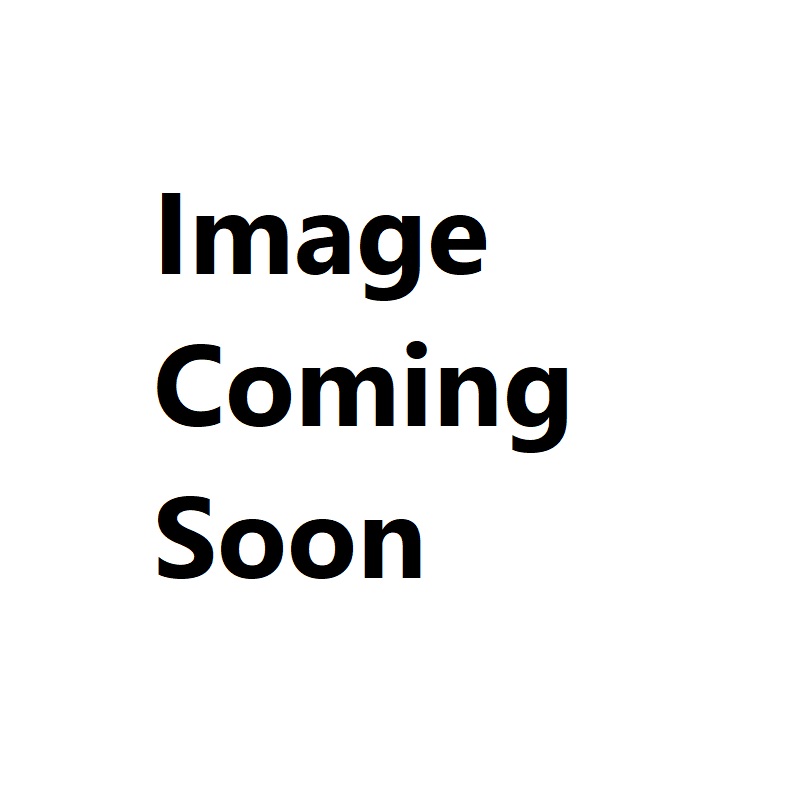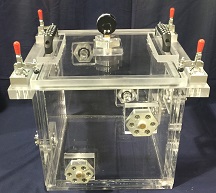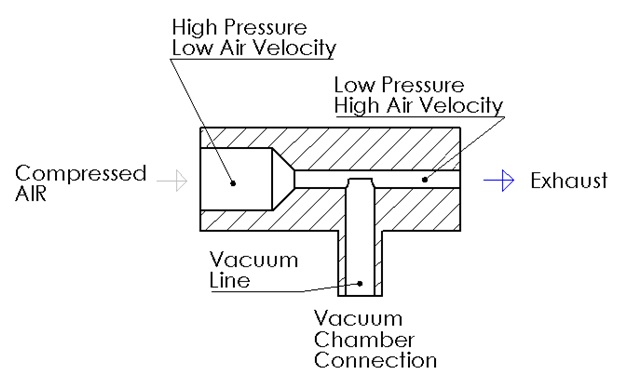Visual Inspection is the simplest type of non-destructive testing available to you. Visual inspection is an attractive option because it does not require the purchase of any additional equipment. There are several arguments against Visual Inspection of heat seals; the argument against visual inspection is that visual inspection is subjective, unreliable, operator dependent, or not a valid method of inspection. However, if you have the correct training, procedures, and documentation in place, visual inspection can become a powerful tool in your quest for better packaging.
About Visual Inspection
What if I told you that any kind of testing and inspection is performed through a visual inspection? Even when you are using an electron microscope to measure distances between molecules, you must visually inspect the dials, indicators, and options in order to perform your test. In the end, you visually determine your result.
The FDA states that visual inspection is a valid form of inspection contingent that the operator has been properly trained. What properly trained means is not defined; proper procedures and training is something that you will have to figure out and defend if ever questioned by the governing body such as the FDA.
Visual Inspection should be done alongside with other tools. When performing a visual inspection, use your hands to touch the seal and feel for any bumps or irregularities. Grab a ruler and look for seal thickness. If your pouch is transparent, hold the pouch up against a light source and look for seal discontinuity, imperfections, or channels. You should pull on the seal to see if it can be peeled open easily. You will be amazed by how much can be discovered about the heat seal quality using visual inspection.
This is a great way to inspect heat seals for voids, wrinkles, and pleats (double, multiple folds). Product contamination, seal alignment, machine defects, heat seal defects, and seal delamination can also be determined.
When to perform a visual inspection?
Visual inspection is best performed on low volume items or procedures. Say visually inspecting a process that is done once a day. It also performs well on periodic inspection that are done in batches at periodic time intervals. Let’s say inspecting 100 pouches in one sitting done daily or weekly by a properly trained operator.
How to perform a visual inspection
Define your Defects
A visual inspection should be performed after your defects have been fully defined. You cannot look for defects that you have not defined. Sometimes, you may inspect for heat seal width but not for pleats.
Define your Inspection Procedure
Visual inspection is perhaps your quickest way to discover a quality defect on your production line or heat-sealing procedure. This is only true if you have a fully defined inspection procedure in place and the person performing the visual inspection is fully and appropriately trained on the quality defects to be inspected for and on the inspection procedure.
Choose the Right Person
Due to its time consuming and monotonous nature of visual inspection, it may not be a task for every person on your team. You must discover who the right person for the job is. Some people are not cut out to perform visual inspections and will miss more defects. Others may be better at detecting patterns and doing a great job. As the leader, it is your job to find the best person who will perform the visual inspection.
The Drawbacks of Visual Inspection
As mentioned earlier, a visual inspection is monotonous and time consuming which will result in operator fatigue. This will also make it heavily operator dependent, some operators will have better vision, focus, and perception than others.
Visual inspection is highly subjective meaning that it will differ from one person to another.
Oftentimes you will discover that visual inspection will start to fail due to increase in throughput or other situations at which point, you will have to look for alternative inspection systems.
Sometimes a “2 by 100” inspection is performed: This means that 100% of all product is inspected by two different operators.
What is usually inspected for in a visual heat seal inspection?
Seal Width
The first and foremost seal inspection criteria is the width of the seal. If your heat-sealing machine is specified to make a seal 0.25 inches wide, you must inspect for this width. Most of the time, a specialized tool, as it a marked piece of paper or plastic (which has marks that specify the width of the seal) is used to measure the width of the seal. Sometimes, calipers are used. We have even seen triangular rulers marked up at the correct width used to inspect for seal with.
Depending on the size of the pouch, you must choose several inspection points along your pouch. A smaller pouch will have as little as 4 inspection points. A larger pouch on the other hand, can have up to 10 or even 20 inspection points.
The results of the visual seal width test can tell you if you have the correct sealing temperature, pressure, and dwell time. Additionally, the seal width can also tell you whether your pouch seal is correctly aligned.
Blisters
Just as with the seal width test, you must look for air blisters on your seal. Use the same approach to check for presence of air pockets in your heat seal.
Air blisters can tell you a few things about your seal. Such as dull sealing surface, wrong sealing temperature, bad quality sealing film, or presence of impurities on the sealing surface.
Film Folds
Film folds are a major concern as these can create a leak path along the seal. This leak path can become a major issue due to improperly sealed product. Some of the results of a leak path present due to seal fold are spoiled product, contaminated product, decreased shelf life, stale package, not to mention customer returns and safety concerns due to the leak path.
A seal fold can be seen with the naked eye, it can also be felt with the tip of the inspector’s fingers.
If you discover too many seal folds during your visual inspection, some of the root causes may be film placement, heat seal press alignment, worn out assembly parts, re-adjusted heat seal assembly.
Seal Color
Sometimes if the seal temperature is too high, burning or heat seal discoloration may occur. Fortunately, the seal discoloration can be detected with the naked eye.
Seal Cleanliness
Does your seal show presence of particulate inside or outside? This failure mode can be the result of several factors such as dirty sealing area, non-ventilated room, improper preparation procedures before the heat seal operation is performed, or faulty heat-sealing machine.
Seal Surface Texture
Some heat-sealing machines have knurled heat seals. This way the sealing surface is increased and the quality of the heat seal is improved. Your visual inspection should look for consistent heat seal texture, and knurl patterns if your heat seal die is knurled.
If the heat seal texture varies or is changing from pouch to pouch you may for a faulty process or your heat seal die needs replacement.
Seal Strength through Squeeze Test
Did you know that the squeeze test is the most popular seal strength test? Fully 93% of all our customers we interviewed perform the squeeze test.
The squeeze test can be performed on all flexible pouches, bags, and packages. It can also be performed on packages filled with liquid or solid. By applying pressure to the package, the operator can easily spot a leak or a weak heat seal.
Just be careful not to squeeze too much on a gel filled package.
Peel Strength
The peel strength is a destructive test that is done by opening the heat seal package, pulling on each film, and observing and feeling the strength of the heat seal.
Sometimes a bad seal can be discovered quickly through this method.
Final Word on Visual Inspection
Visual Inspections can work well when it comes to making sure that you have a good process in place. Keep in mind that how well a visual inspection will perform and how well the visual inspection will detect defects will also depend on your corporate culture.
Let us elaborate on two scenarios that we have witnessed on visual inspection by comparing a “bad” and a “good” company.
The Bad Company
We visited a company that incorporated a visual inspection procedure on their production line but would often discover that it was largely ineffective in determining defects. Management blamed the operators for being absent minded and apathetic.
This company called us to look at their situation in the hopes that we could offer some insight. We happily accepted and went to work. However, we quickly discovered that the fault did not lie fully with the operators; it was actually the management who was at fault.
If too many defects were discovered during the visual inspection, it slowed the production line down which in turn lowered efficiencies of the shift. This in turn lowered the numbers of the corresponding shift supervisor who would get in trouble by their director of manufacturing. You can guess what started to happen, the supervisor would then bully the operators into lowering the rejects and upping the machine efficiency. The operators, not wanting to get in trouble, would pass rejects. The shift numbers looked fabulous, everyone got their bonus.
Six months later, the quality department would start to get rejects from customers. The quality department would assign an engineer to look at the problem. The engineer was actually the one who implemented the visual inspection procedure in the first place since management was too frugal to get the proper heat seal inspection equipment. Well, the engineer did not get her bonus because she was blamed by the production department for implementing a bad inspection procedure.
We completed our analysis and offered a few suggestions on how to solve their quality issues and high product return rates. All our suggestions were rejected…
Unfortunately, in the end we told them that we could not help them.
The Good Company
Not even four months after the “bad company incident”, we were called in by another client to do some upgrades on the internal pressurization bubble leak testing tank they purchased from us. As we worked on the tank, the engineering lab manager held a team meeting in the same lab. We overheard the manager say something along these lines: “If you discover a leak, or any other failure during your inspection, please do not talk to anyone, come talk to me first and I will back you up! They will try to throw you under the bus and say that you created the failure, so please come talk to me and I will talk to them about any particular visual inspection failure.”
You see, the good company had created a culture of trust between the inspector and management. They were not “shooting the messenger.” If a defect was detected, it was discussed through the appropriate channels and a corrective action and preventative action was implemented.
You can “betcha” that the good company was making higher quality products at a much, much lower return rate and quality issues.
The effectiveness of the Visual Inspection is Company Dependent
Just as the visual inspection is operator dependent, it is also manager dependent, and finally, company dependent.
When you hear visual inspection being unreliable and ineffective, you should first investigate the company culture, the environment, and the inspection procedure. You will quickly discover that visual inspections are ineffective when they are performed in an environment that punishes the inspector who does their job and does the right thing by rejecting rejects.
On the other hand, visual inspections are highly effective if they are performed in an environment in which the inspectors are rewarded for doing the right thing while at the same time, management has created a safe and trusting relationship within the organization.
Similar Items
Our clients prefer to work with us because we are Experts in Vacuum Science and Technology. Check out some of our other items we carry that you can combine/integrate with your systems or projects.
